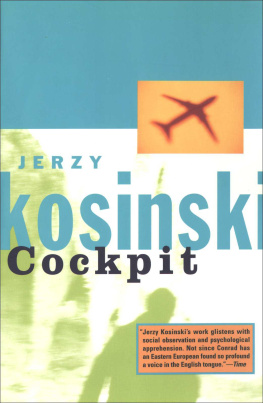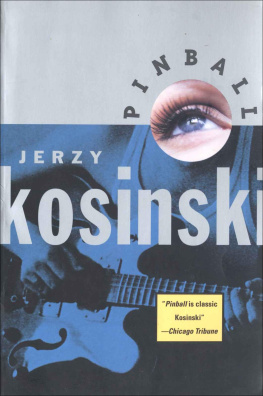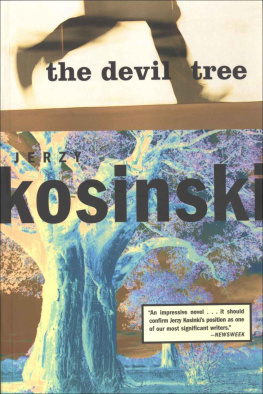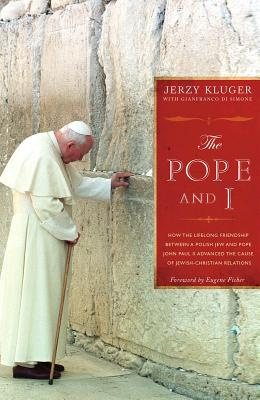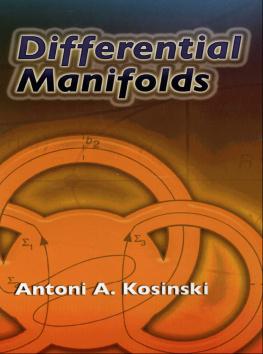Summary:
Semiautobiographical novel by Jerzy Kosinski, published in 1965 and revised in 1976. The ordeals of the central character parallel Kosinski's own experiences during World War II. A dark-haired Polish child who is taken for either a Gypsy or a Jew loses his parents in the mayhem of war and wanders through the countryside at the mercy of the brutal, thickheaded peasants he meets in the villages. He learns how to stay alive at any cost, turning survival into a moral imperative. Full of graphic scenes depicting rape, torture, and bestiality, the novel portrays evil in all its manifestations and speaks of human isolation as inevitable.
B OOKS BY J ERZY K OSINSKI
NOVELS
The Painted Bird
Steps
Being There
The Devil Tree
Cockpit
Blind Date
Passion Play
Pinball
The Hermit of 69th Street
ESSAYS
Passing By
Notes of the Author
The Art of the Self
NONFICTION
(Under the pen name Joseph Novak)
The Future Is Ours, Comrade
No Third Path
To the memory of my wife Mary Hayward Weir
without whom even the past would
lose its meaning
Copyright 1965, 1976 by Jerzy N. Kosinski
All rights reserved. No part of this book may be reproduced in any form or by any electronic or mechanical means, including information storage and retrieval systems, without permission in writing from the publisher, except by a reviewer, who may quote brief passages in a review. Scanning, uploading, and electronic distribution of this book or the facilitation of such without the permission of the publisher is prohibited. Please purchase only authorized electronic editions, and do not participate in or encourage electronic piracy of copyrighted materials. Your support of the authors rights is appreciated. Any member of educational institutions wishing to photocopy part or all of the work for classroom use, or anthology, should send inquiries to Grove/Atlantic, Inc., 841 Broadway, New York, NY 10003 or permissions@groveatlantic.com.
First published in the United States of America in 1976 by Houghton Mifflin Company
Published simultaneously in Canada
Printed in the United States of America
Library of Congress Cataloging-in-Publication Data
The painted bird/Jerzy Kosinski; with an introduction by the author.2nd ed.eBook ISBN-13: 978-0-8021-9575-31. PolandHistoryOccupation, 1939-1945Fiction. 2. World War, 1939-1945Europe, EasternFiction. 3. Abandoned childrenEurope, EasternFiction. I. Title.
PS3561.O8P3 1995 813.54dc20 95-19520
Grove Press
an imprint of Grove/Atlantic, Inc.
841 Broadway
New York, NY 10003
Distributed by Publishers Group West
www.groveatlantic.com
and only God, omnipotent indeed, knew they were mammals of a different breed. MAYAKOVSKY
This new edition of The Painted Bird incorporates some
material that did not appear in the first edition.
AFTERWARD
In the spring of 1963, I visited Switzerland with my American-born wife, Mary. We had vacationed there before, but were now in the country for a different purpose: my wife had been battling a supposedly incurable illness for months and had come to Switzerland to consult yet another group of specialists. Since we expected to remain for some time, we had taken a suite in a palatial hotel that dominated the lake-front of a fashionable old resort.
Among the permanent residents at the hotel was a clique of wealthy Western Europeans who had come to the town just before the outbreak of World War II. They had all abandoned their homelands before the slaughter actually began and they never had to fight for their lives. Once ensconced in their Swiss haven, self-preservation for them meant no more than living from day to day. Most of them were in their seventies and eighties, aimless pensioners obsessively talking about getting old, growing steadily less able or willing to leave the hotel grounds. They spent their time in the lounges and restaurants or strolling through the private park. I often followed them, pausing when they did before portraits of statesmen who had visited the hotel between the wars; I read with them the somber plaques commemorating various international peace conferences that had been held in the hotels convention halls after World War I.
Occasionally I would chat with a few of these voluntary exiles, but whenever I alluded to the war years in Central or Eastern Europe, they never failed to remind me that, because they had come to Switzerland before the violence began, they knew the war only vaguely, through radio and newspaper reports. Referring to one country in which most of the extermination camps had been located, I pointed out that between 1939 and 1945 only a million people had died as the result of direct military action, but five and a half million had been exterminated by the invaders. Over three million victims were Jews, and one third of them were under sixteen. These losses worked out to two hundred and twenty deaths per thousand people, and no one would ever be able to compute how many others were mutilated, traumatized, broken in health or spirit. My listeners nodded politely, admitting that they had always believed that reports about the camps and gas chambers had been much embellished by overwrought reporters. I assured them that, having spent my childhood and adolescence during the war and postwar years in Eastern Europe, I knew that real events had been far more brutal than the most bizarre fantasies.
On days when my wife was confined to the clinic for treatment, I would hire a car and drive, with no destination in mind. I cruised along smartly manicured Swiss roads winding through fields which bristled with squat steel and concrete tank traps, planted dur-the war to impede advancing tanks. They still stood, a crumbling defense against an invasion that was never launched, as out of place and purposeless as the antiquated exiles at the hotel.
Many afternoons, I rented a boat and rowed aimlessly on the lake. During those moments I experienced my isolation intensely: my wife, the emotional link to my existence in the United States, was dying. I could contact what remained of my family in Eastern Europe only through infrequent, cryptic letters, always at the mercy of the censor.
As I drifted across the lake, I felt haunted by a sense of hopelessness; not merely loneliness, or the fear of my wifes death, but a sense of anguish directly connected to the emptiness of the exiles lives and the ineffectiveness of the postwar peace conferences. As I thought of the plaques that adorned the hotel walls I questioned whether the authors of peace treaties had signed them in good faith. The events that followed the conferences did not support such a conjecture. Yet the aging exiles in the hotel continued to believe that the war had been some inexplicable aberration in a world of well-intentioned politicians whose humani-tarianism could not be challenged. They could not accept that certain guarantors of peace had later become the initiators of war. Because of this disbelief, millions like my parents and myself, lacking any chance to escape, had been forced to experience events far worse than those that the treaties so grandiloquently prohibited.
The extreme discrepancy between the facts as I knew them and the exiles and diplomats hazy, unrealistic view of the world bothered me intensely. I began to reexamine my past and decided to turn from my studies of social science to fiction. Unlike politics, which offered only extravagant promises of a Utopian future, I knew fiction could present lives as they are truly lived.
When I had come to America six years before this European visit, I was determined never again to set foot in the country where I had spent the war years. That I had survived was due solely to chance, and I had always been acutely aware that hundreds of thousands of other children had been condemned. But although I felt strongly about that injustice, I did not perceive myself as a vendor of personal guilt and private reminiscences, nor as a chronicler of the disaster that befell my people and my generation, but purely as a storyteller.


